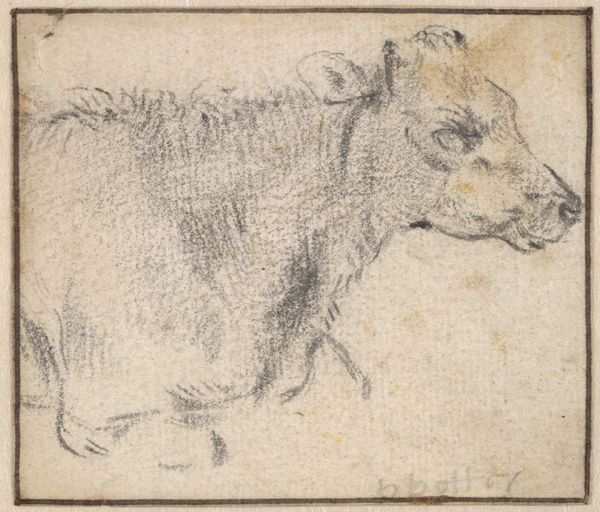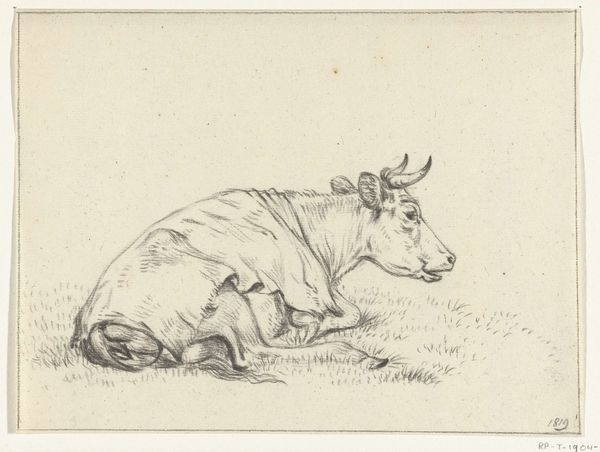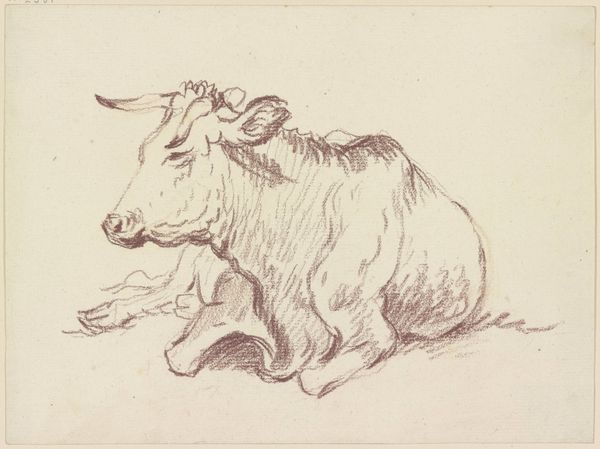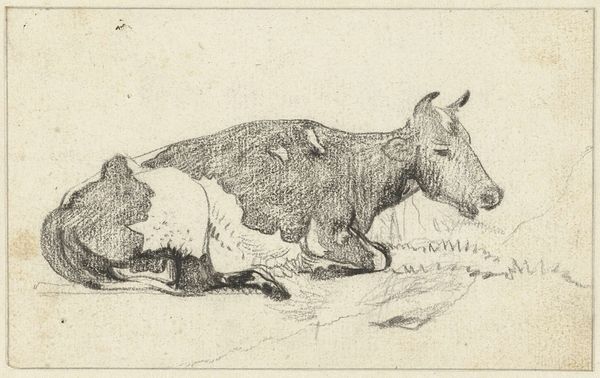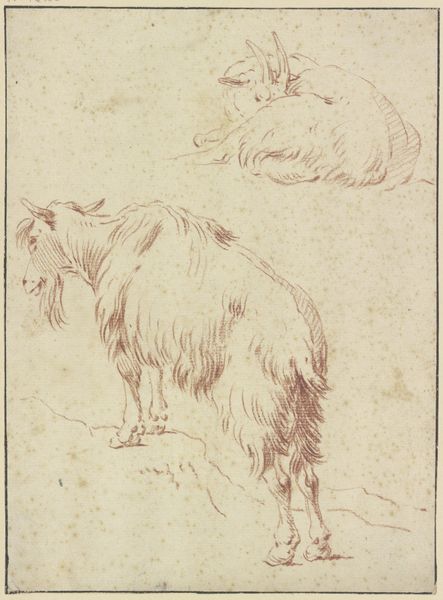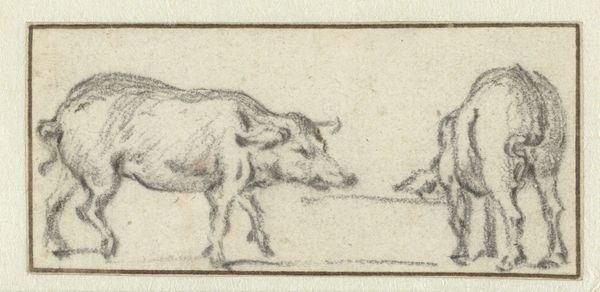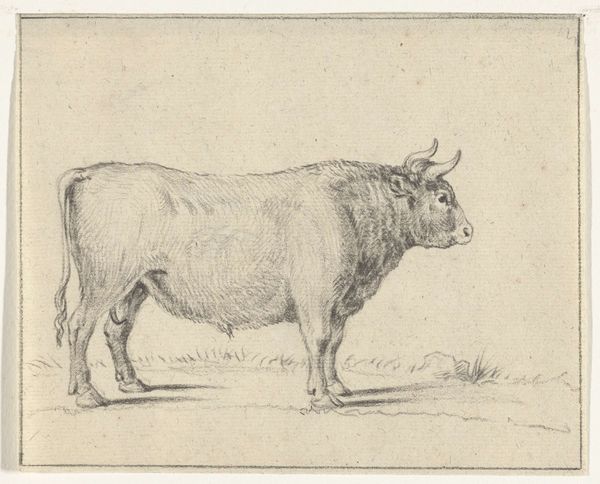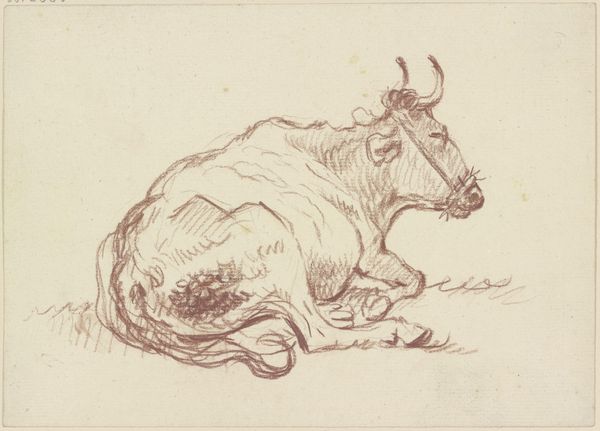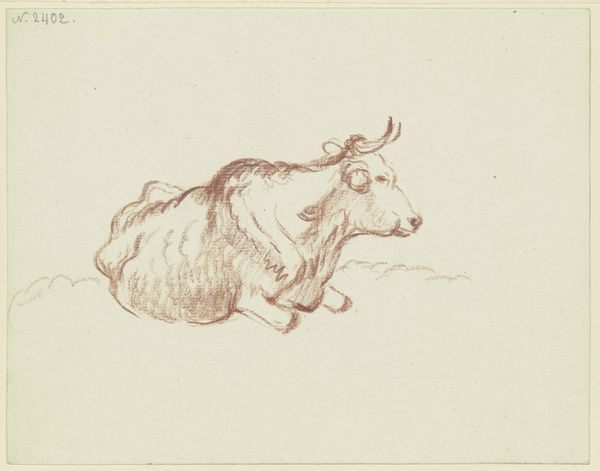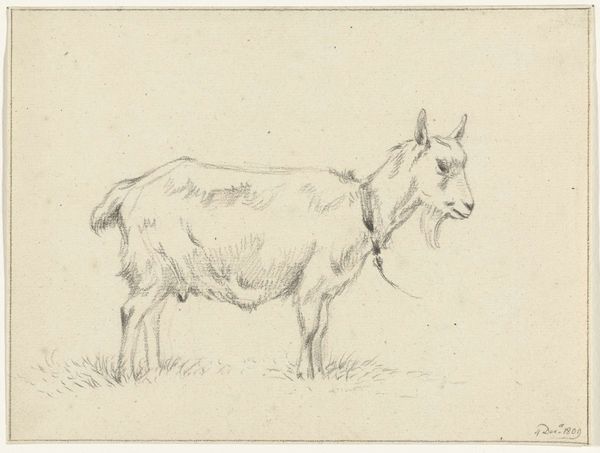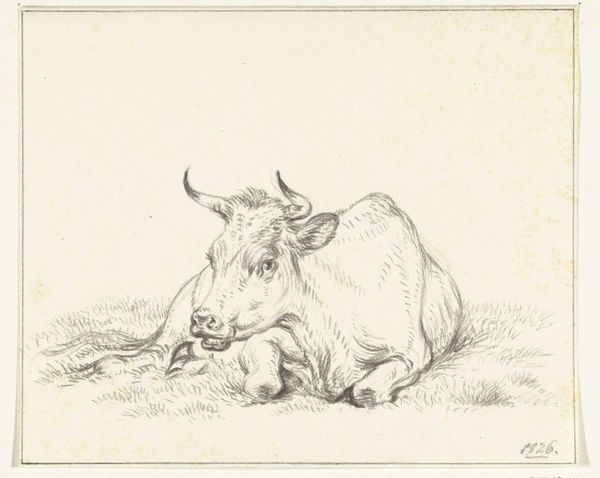
drawing, pencil, chalk
#
drawing
#
baroque
#
landscape
#
figuration
#
pencil
#
chalk
#
watercolour illustration
Copyright: Public Domain
Curator: We’re now looking at “Lying cattle to the right”, a drawing by Paulus Potter, currently residing in the Städel Museum’s collection. It seems to be a chalk and pencil work, though some classify it as watercolor. What strikes you about it? Editor: It's deceptively simple. My first thought is rest—the quiet contentment of the animal, emphasized by the soft rendering. I think about the conditions allowing that peacefulness: human labor and power dynamics hidden from immediate view. Curator: Potter was, after all, celebrated for his animal paintings and studies. His ability to capture the textures and the physicality of these creatures was highly valued by the market and powerful collectors in the Dutch Golden Age. We must remember how art patronage played a crucial role then. Editor: Absolutely. His almost scientific realism in depicting the cow highlights a particular cultural attitude toward animals as resources, a view steeped in class divisions where wealthy elites celebrated rural scenes that simultaneously obscured and depended on exploited labor. Curator: Yes, this detailed rendering reflects a specific social perspective that upheld a vision of pastoral life, often removed from the everyday realities of agricultural workers. Potter received numerous commissions from wealthy land owners who used paintings such as these to affirm a romanticised vision of rural life on their properties. Editor: The Baroque era and its artistic celebration of detailed figuration always opens an opportunity for discussion of gendered representation, doesn’t it? To what extent can an image such as this also be seen to glorify bovine fertility, thereby re-inscribing naturalized stereotypes about females? Curator: It's fascinating to consider. Potter’s work, while seemingly simple, existed within and reinforced complex systems of economic and social power of its time. Today it serves as a reminder that pastoral images cannot and should not be seen simply as ‘country life.’ Editor: Right, examining those underlying structures, especially in relation to modern practices, allows us to engage critically with contemporary industrial agriculture. Thank you for sharing your insights into the social impact that art has upon viewers through different lenses.
Comments
No comments
Be the first to comment and join the conversation on the ultimate creative platform.
